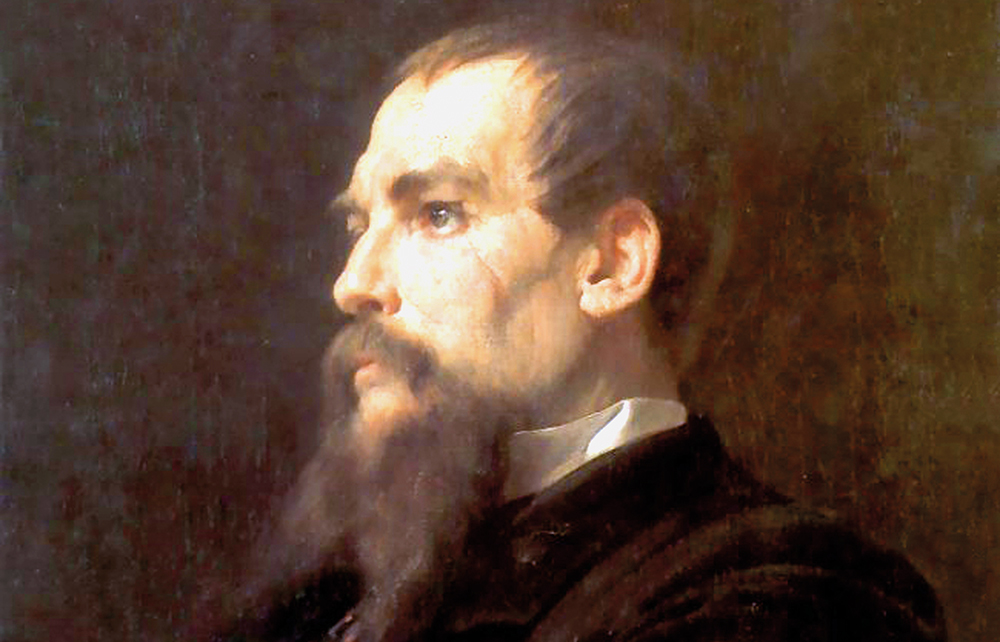For the 19th-century English adventurer, author, ethnographer, pornographer and all-round maverick Richard Burton, one of life’s happiest moments was ‘the departure upon a distant journey into unknown lands’. There would of course be difficulties; but happiness derives from the prospect of overcoming great challenges and in the process achieving fame and perhaps even fortune. By contrast, what delights the reader most is when a traveller, somewhere deep in those unknown lands, faces overwhelming obstacles. What possible interest is there in hearing that they went, they saw and they returned?
Few journeys involved more hardship than the one Burton contemplated in the spring of 1855. Aged 34, he had already travelled widely, served in India with the East India Company’s army and in the Crimean War, made the hajj to Mecca and visited Egypt. He had also published five books, including one on falconry and another on bayonet exercises. Though he came from a well-off family and had studied at Oxford, he was a individualist, known as ‘ruffian Dick’. But it wouldn’t be until the summer of 1857 that he finally embarked on the greatest of his distant journeys. Assisted by a junior officer, John Hanning Speke, and native guides, porters and guards, he intended to walk inland from the East African shore to answer the greatest geographical puzzle of the time: where did the Nile, the world’s longest river, rise?
The aim was to solve the greatest geographical puzzle of the time: where did the world’s longest river rise?
Alongside the joy of departure, there were great anxieties about the challenges and dangers ahead, and with good reason. Two years earlier, after both Englishmen had landed in Berbera – in present-day Somaliland – they had been severely wounded in an attack during which a large amount of their equipment and stores had been looted.
The horrors that lay ahead of them as they began their new expedition were no less significant, and yet they persevered. Sick and dangerously short of supplies, with Speke almost blind and Burton so weak he had to be carried, they became the first known Europeans to reach Lake Tanganyika. Burton was confident that this vast body of water must be the source of the Nile. But there were tales of another great lake, which Speke was avid to explore; so, leaving Burton to recover from his fevers, he continued on to the Nyanza (subsequently named by him Lake Victoria), which he in turn proclaimed to be the Nile’s source.
In fierce disagreement, the two men made their separate journeys home. Speke was first to arrive in London, and though he had promised Burton that he would wait before making any announcement, he went straight to the Royal Geographical Society and declared that he, and he alone, had found the source of the Nile.
The story of their journey and their falling out over Speke’s premature announcement; of the Society’s funding of a return expedition to Africa for Speke, but not Burton; of the success of that subsequent venture; of their planned debate at a conference in Bath in 1864, and of how Speke fatally shot himself the previous day climbing a loose stone wall while out partridge-shooting, has been told often and well, not least in Alan Moorehead’s classic The White Nile and Tim Jeal’s longer, denser Explorers of the Nile (2011).
The American writer Candice Millard comes to the subject with three prize-winning books behind her, and it is easy to see why River of the Gods, which reads like a thriller, was such a success when it appeared last year in the US. Burton stands out for many reasons, being a complex man whose curiosity extended from the spiritual to the sensual and sexual, and whose physical endurance was matched by a passion for learning about other peoples, a hunger for life on the edges and a facility with words and languages. Speke is presented as a less interesting character, whose physical strength, abilities with a gun and longing for fame would drive him back to the African interior.
Such journeys had real and lasting consequences for East Africa – most of which was colonised by Europeans in the following couple of decades – and I would have liked to have heard more about that, and about subsequent journeys verifying the Nile’s source. This is, after all, the story of the river. But Millard keeps her focus on the two men, teasing out the complexities of their relationship and showing how the British establishment rallied behind Speke (whom they recognised as one of their own) and were quick to shun Burton, despite his extraordinary achievements, because he never quite fitted in.
She also points out the casual racism of both men, as well as their reliance on natives. Like most European explorers, they were utterly dependent on their African guides and porters to get them to their destinations and make their ‘discoveries’. Although she doesn’t go so far as to tell the story from the native point of view, she emphasises the importance to both expeditions of Sidi Mubarak Bombay – a Yao who had been captured as a child by Arab slavers and taken to India, but had made his way home. He is a fascinating figure, and perhaps the true hero of the story. He would later help Stanley find Livingstone, would cross the continent from coast to coast and become one of the greatest of all explorers of Africa.






Comments